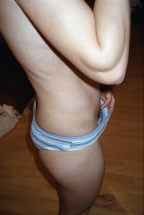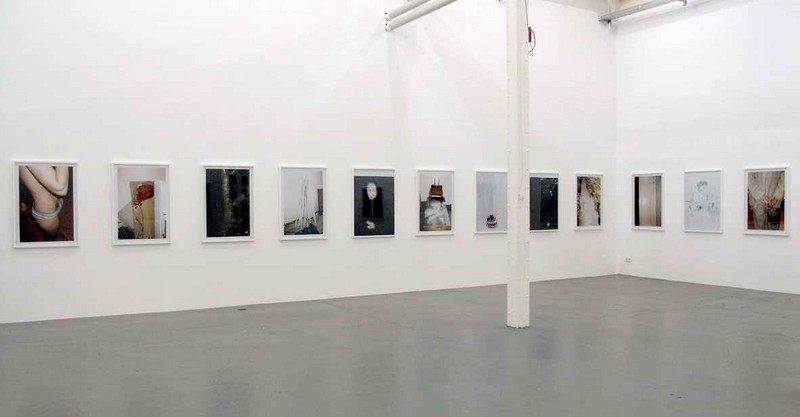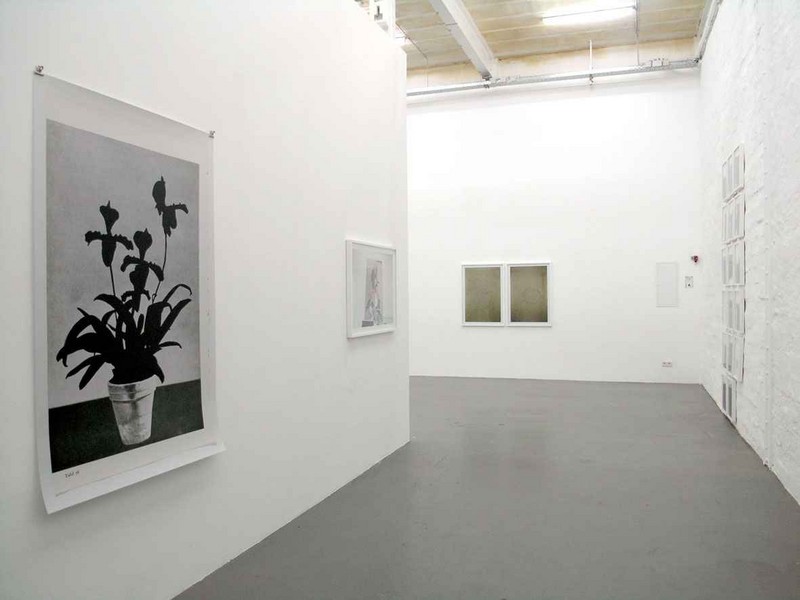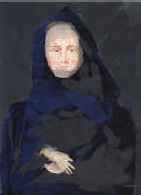Markus Uhr JEDER TAG
07 Jul - 04 Aug 2007
A Flaneur Between Objects
Markus Uhr's pictures posit questions as to human existence, the human standpoint within the world of objects, as well as the possibilities of movement within the photographic medium. The photographs record things in time, but which time are we dealing with? In photographic images, Uhr - the man and the artist - captures aspects of his personal, everyday life, yet does not document in a conventional sense the specific "scene" of which he is a member, his socio-political "context", nor a recognisably specific "place". However, as is natural to the medium, the images have their origin in an external time-space reality. What at first appears as an inconspicuous, meek and casual inventory of an array of banal, discarded and obsolete objects and situations evolves upon closer inspection into an existentialist picture story - a narrative preceding moral evaluation or counter-narration in terms of any fixed interpretation. The paramount criterion, the ultimate place of action and intellectual essence is the image - as the potential context within which to focus the gesture of perception in an individually relevant way. Uhr's images articulate this so urgently that it appears ineffective to seek words with which to express them alternatively; at the same time his pictures are full of linguistic gestures.
Images Between Memories
Markus Uhr's pictures - as disparate fragments of the everyday - investigate the local colour, structure and accidental order of the objects and persons depicted. They seem to offer the prerequisites enabling memory - but a memory of what? The eternally frozen gesture of a primate specimen, as the animal reaches out for a virtual object; a stack of dysfunctional car wheels and tyres in store between seasons; the illuminated word "UND" jutting out of the darkness; a metallic-brown 1980s Opel Manta in front of a crumbling, brownish building; fellow artists engaging in situations seemingly stereotypic for their occupation; a cheap imitation Persian rug cut in half spread out on the pavement; a whole cheap imitation Persian rug, rolled up and propped in front of a furniture store; sculptural arrangements of shattered furniture in the filthy corners of a studio, bar or club; fresh tyre tracks drawn in the snow by a turning car; a portrait of the artist shot by an anonymous traffic police speed camera; a self-portrait of the artist as a flash of light reflecting off a tiled bathroom wall - signs, portents, sculptural stuff, decipherable symbolic material? Or visual pathways and picture fragments that set into motion the power of memory and imagination within the viewer. The exact memory function and meaning ascribed to the object is as open and varied as the associations and recollections incited within the observer's mind.
Gestures Between Growth and Decay
As if "guided by higher powers" (Polke), Markus Uhr seems drawn to the overlooked,the neglected and the worn out - as if these objects speak to him as protagonists and props of a latent narrative on another level. Often, traces of usage and differing states of use and neglect refer to the depicted objects' original function. Sometimes, a found image is given new life as the starting point for a new picture. Uhr often groups his pictures in pairs, to draw attention to possible similarities, repetitions or polarities. In this visual communion, the images seem to mutually reflect one another. The corporeal animal meets the domestic, the geological the architectural, the gastronomic the scatological, the technical the organic, the pornographic the literary. The observer finds himself confronted with clear depictions of (un)ambiguous objects that seem to possess a narrative function. Yet, due to the severe focus on the object, violently isolating it from surrounding space, there is no real connection to the greater plot.
The real story is not represented. Perhaps, the real story does not even take place. In a process of searching and disclosure, Markus Uhr's images represent a gradual movement from the depiction of concrete objects to the image of abstract objects, signs and pictures of conjecturable meaning. They're here delineates a broad domain in which to "gain possession" of possible images. They (the images) are here, and you (the observer) are also here - in the nil of the image in between the objects of life.
Text: Oliver Kossack
Markus Uhr's pictures posit questions as to human existence, the human standpoint within the world of objects, as well as the possibilities of movement within the photographic medium. The photographs record things in time, but which time are we dealing with? In photographic images, Uhr - the man and the artist - captures aspects of his personal, everyday life, yet does not document in a conventional sense the specific "scene" of which he is a member, his socio-political "context", nor a recognisably specific "place". However, as is natural to the medium, the images have their origin in an external time-space reality. What at first appears as an inconspicuous, meek and casual inventory of an array of banal, discarded and obsolete objects and situations evolves upon closer inspection into an existentialist picture story - a narrative preceding moral evaluation or counter-narration in terms of any fixed interpretation. The paramount criterion, the ultimate place of action and intellectual essence is the image - as the potential context within which to focus the gesture of perception in an individually relevant way. Uhr's images articulate this so urgently that it appears ineffective to seek words with which to express them alternatively; at the same time his pictures are full of linguistic gestures.
Images Between Memories
Markus Uhr's pictures - as disparate fragments of the everyday - investigate the local colour, structure and accidental order of the objects and persons depicted. They seem to offer the prerequisites enabling memory - but a memory of what? The eternally frozen gesture of a primate specimen, as the animal reaches out for a virtual object; a stack of dysfunctional car wheels and tyres in store between seasons; the illuminated word "UND" jutting out of the darkness; a metallic-brown 1980s Opel Manta in front of a crumbling, brownish building; fellow artists engaging in situations seemingly stereotypic for their occupation; a cheap imitation Persian rug cut in half spread out on the pavement; a whole cheap imitation Persian rug, rolled up and propped in front of a furniture store; sculptural arrangements of shattered furniture in the filthy corners of a studio, bar or club; fresh tyre tracks drawn in the snow by a turning car; a portrait of the artist shot by an anonymous traffic police speed camera; a self-portrait of the artist as a flash of light reflecting off a tiled bathroom wall - signs, portents, sculptural stuff, decipherable symbolic material? Or visual pathways and picture fragments that set into motion the power of memory and imagination within the viewer. The exact memory function and meaning ascribed to the object is as open and varied as the associations and recollections incited within the observer's mind.
Gestures Between Growth and Decay
As if "guided by higher powers" (Polke), Markus Uhr seems drawn to the overlooked,the neglected and the worn out - as if these objects speak to him as protagonists and props of a latent narrative on another level. Often, traces of usage and differing states of use and neglect refer to the depicted objects' original function. Sometimes, a found image is given new life as the starting point for a new picture. Uhr often groups his pictures in pairs, to draw attention to possible similarities, repetitions or polarities. In this visual communion, the images seem to mutually reflect one another. The corporeal animal meets the domestic, the geological the architectural, the gastronomic the scatological, the technical the organic, the pornographic the literary. The observer finds himself confronted with clear depictions of (un)ambiguous objects that seem to possess a narrative function. Yet, due to the severe focus on the object, violently isolating it from surrounding space, there is no real connection to the greater plot.
The real story is not represented. Perhaps, the real story does not even take place. In a process of searching and disclosure, Markus Uhr's images represent a gradual movement from the depiction of concrete objects to the image of abstract objects, signs and pictures of conjecturable meaning. They're here delineates a broad domain in which to "gain possession" of possible images. They (the images) are here, and you (the observer) are also here - in the nil of the image in between the objects of life.
Text: Oliver Kossack







